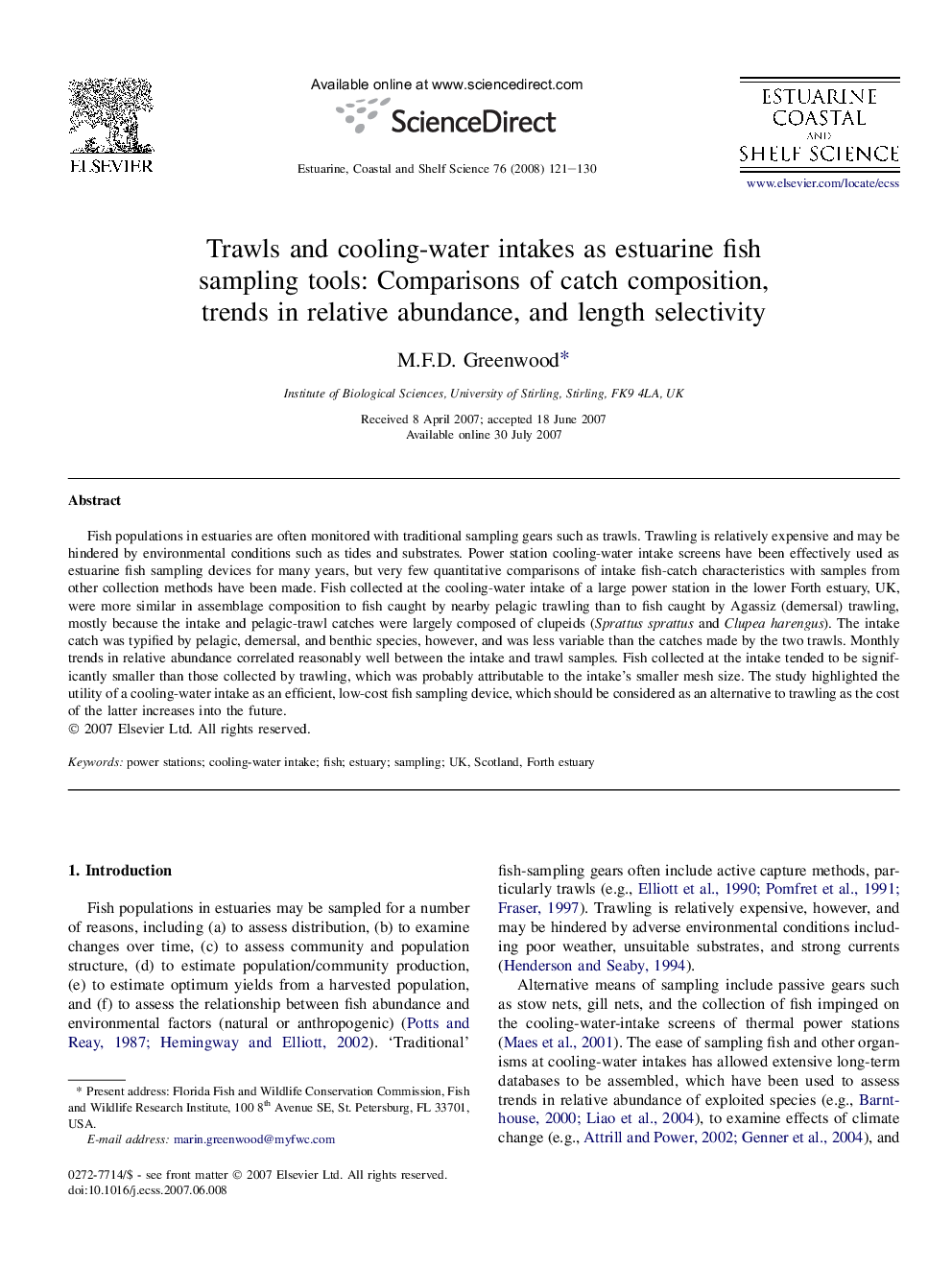| Article ID | Journal | Published Year | Pages | File Type |
|---|---|---|---|---|
| 4542271 | Estuarine, Coastal and Shelf Science | 2008 | 10 Pages |
Fish populations in estuaries are often monitored with traditional sampling gears such as trawls. Trawling is relatively expensive and may be hindered by environmental conditions such as tides and substrates. Power station cooling-water intake screens have been effectively used as estuarine fish sampling devices for many years, but very few quantitative comparisons of intake fish-catch characteristics with samples from other collection methods have been made. Fish collected at the cooling-water intake of a large power station in the lower Forth estuary, UK, were more similar in assemblage composition to fish caught by nearby pelagic trawling than to fish caught by Agassiz (demersal) trawling, mostly because the intake and pelagic-trawl catches were largely composed of clupeids (Sprattus sprattus and Clupea harengus). The intake catch was typified by pelagic, demersal, and benthic species, however, and was less variable than the catches made by the two trawls. Monthly trends in relative abundance correlated reasonably well between the intake and trawl samples. Fish collected at the intake tended to be significantly smaller than those collected by trawling, which was probably attributable to the intake's smaller mesh size. The study highlighted the utility of a cooling-water intake as an efficient, low-cost fish sampling device, which should be considered as an alternative to trawling as the cost of the latter increases into the future.
